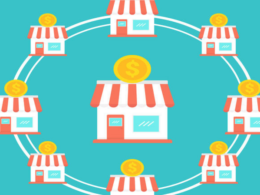At this stage in the game I am crunching the numbers to ensure that I will not be working for free and actually have a viable business plan. A couple of resources that I am using to assist in this process are the book Fashion For Profit by Frances Harder and information from a seminar I went to held by Mercedes Gonzalez, owner of Global Purchasing Companies.
Unfortunately, at this point many of the numbers are estimates because I am not sure of many of the costs involved such as fabric cost, manufacturing cost, shipping, etc. What I do know is the final price point that I want my garments to retail for. I also know that the standard markup retailers implement ranges from 2.2-3.0, boutiques typically being around 2.3. Now I have enough information to calculate the basic cost of a garment (how much it should cost to manufacture). The costing formula I am using is as follows: Retail Price/Markup=Wholesale Price/3=Basic Cost. The Basic Cost lets you know how much you can spend to manufacture a garment at a particular retail price and still make a profit. I still am unsure of this formula because I am not sure exactly what the Basic Cost includes, so I am still investigating this topic.
Obviously there are many other factors that need to be included when calculating your garment cost. These include the fixed costs (general & administrative) as well as variable costs such as sales and marketing. Also, don’t forget to account for nonpaying customers, chargebacks and returns. These should be calculated into your garment as part of the chargeback calculations and can be estimated at 6-8%. It’s a pretty daunting concept that all of these costs are applied to a garments with a wholesale price of $30-$65. However, considering that the costs are spread over hundreds or thousands of garments it becomes feasible.
I have been advised that a good rule of thumb is to ensure your gross profit margin does not fall below 35%. At this point you will still be able to make money, which of course is one of the reasons I have started this business!
Kristin Potenti, Self Assured
�






